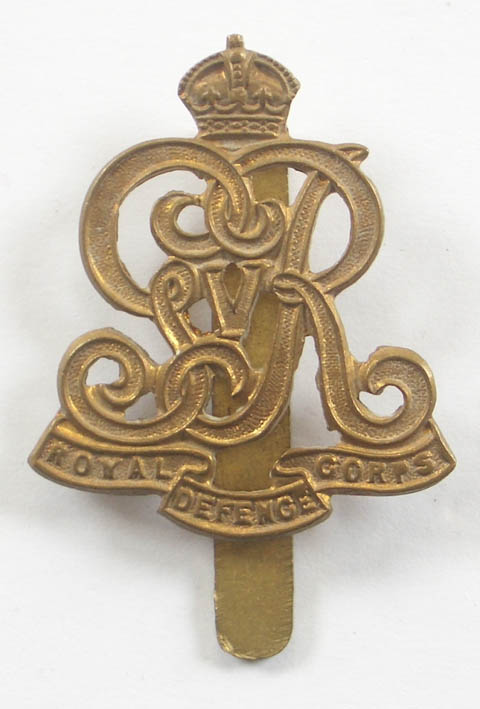The Royal Defence Corps was created in March 1916
for home service duties. It was composed of men who
were not regarded as being fit enough to serve overseas.
Walter Wyatt and Alice Mannall (daughter of William Mannall, landlord of the Station Hotel, in Melton in the early 1870s) were married in St Andrew’s Church in late 1880. Their son, William Alfred Mannall, was born the previous year in Ipswich, 1879. The family lived in Plantation Place before moving to The Street sometime before 1891.
On 1st June 1898, William enlisted in the army and joined the 1st Battalion Suffolk Regiment. He did not get off to a very good start: on 14th July, his record shows that he was “in confinement awaiting trial” and later, on the 19th, that he had been convicted of receiving stolen property. He was imprisoned for six months. This was to be the only blemish on his military career.
William’s first posting overseas was to Malta, where he and his battalion remained for only three months. They were then recalled to England, before being sent to South Africa and the Boer War. William was there for almost three years, during which time he fought several battles and was awarded the Queen’s South Africa Medal with clasps for Cape Colony, Transvaal, and Orange Free State and the King’s South Africa Medal with two clasps.
While travelling home from South Africa on the SS Canada, William became ill with rheumatic fever. On arrival in England, he was transferred to Netley Hospital for treatment. Once recovered from the disease, he continued to serve with the Suffolk Regiment.
In 1911, records show that he was based at the Suffolk Regiment Depot in Bury St Edmunds. At the outbreak of war in 1914, William was still a serving soldier; however, he was not to serve abroad as he was discharged from the regiment in November 1914 on medical grounds. His medical discharge document says:
“Suffered from rheumatic fever during South African War and was in Netley Hospital for this disease in 1902. Got a fresh attack of rheumatic fever in July 1914 the result of exposure on the march. When on the march, in bad weather, with the 3rd Suffolk Regiment he was sent to the military hospital in Bury St Edmunds on 22nd June 1914 with a very severe attack of quinsy. Rheumatic fever followed this. The attack was severe and prolonged and resulted in mitral disease of the heart.”
The doctor in charge made the recommendation that William was discharged as “permanently unfit”, nonetheless, this was not to be the end of William’s military career.
On 14th June 1915, William enlisted once more into the army, initially back into the Suffolk Regiment with the 4th Territorial Battalion, with whom he remained until the 24th June 1916. After this, he was transferred to the 53rd Protection Company of the Royal Defence Corps. The Royal Defence Corps was made up of soldiers from territorial battalions who were unfit for service overseas but were fit enough for home service.
At the end of the war, William volunteered for service in the Army of Occupation on the Rhine and was posted to another territorial battalion, the 3rd/5th East Surrey Regiment. He did not go to Germany and was discharged from the Army on 22nd July 1920, giving his address as: Melton Street, Suffolk.
